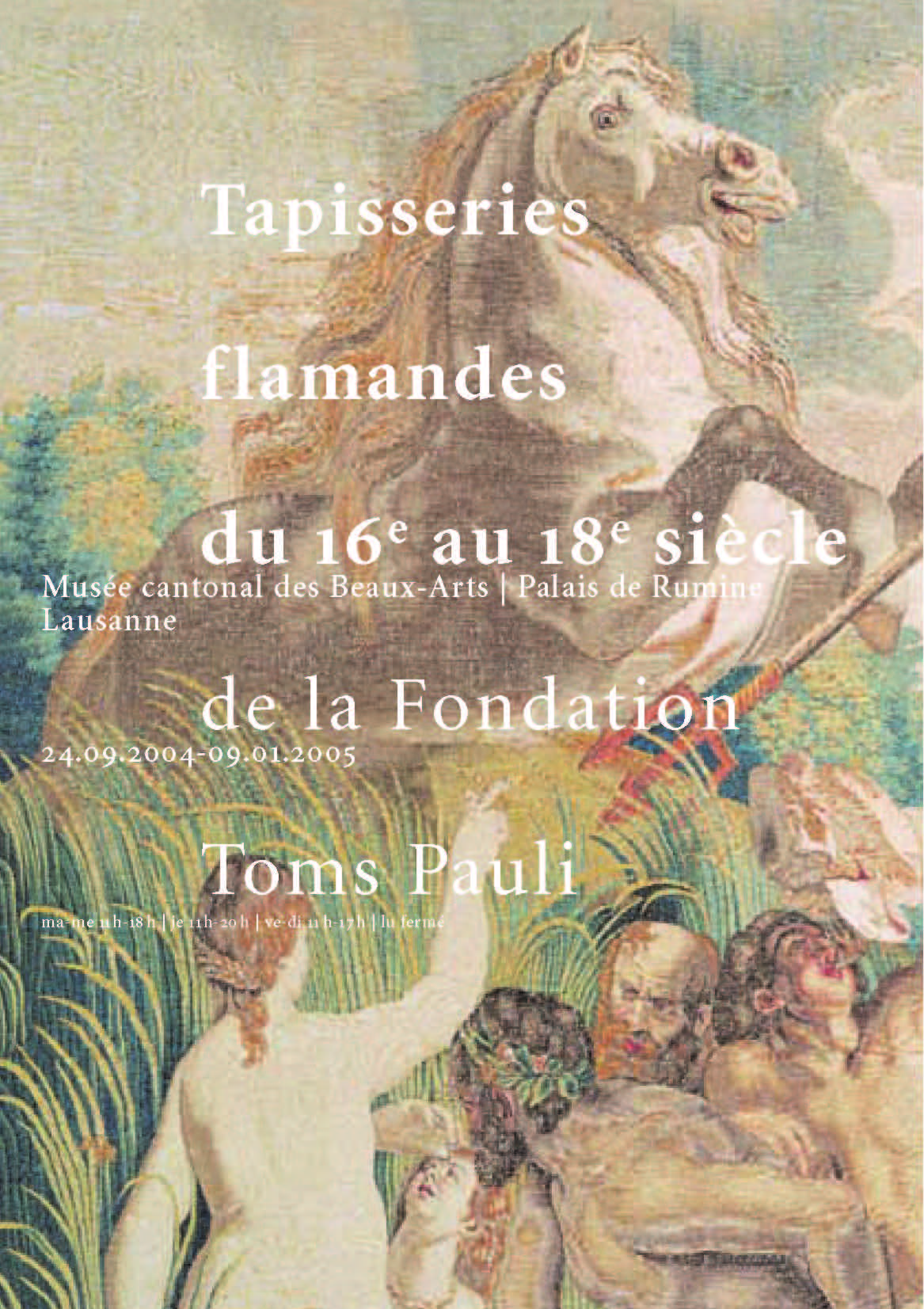
Tapisseries flamandes du 16e au 18e siècle de la Fondation Toms Pauli
Prestigious objects and symbols of wealth, tapestries have long been valued by the greatest patrons. Though lesser-known today, they deserve renewed recognition. For its first presentation in Lausanne, the Toms Pauli Foundation, curator of the exhibition, has selected largely unpublished works from its collection to showcase them to a wider audience.
For centuries, Flemish manufactories dominated tapestry production, elevating it to a major art form. Inspired by mythology, ancient history, or the Bible, the depicted subjects demonstrate remarkable diversity. Flemish workshops were renowned for their technical mastery, allowing them to translate the complexity of designs and an immense range of colors envisioned by painters into wool and silk. Rarely conceived as standalone pieces, tapestries were often part of larger sets, or tentures, illustrating various episodes of a story. The exhibition presents several works from the same series side by side, while the presence of large-format pieces highlights the monumental aspect of this art and its significance as wall decoration.
The Toms Collection
British architect and real estate developer Reginald Toms (1892-1978) built his fortune in property. Initially collecting period furniture, art objects, and Oriental rugs, he developed a passion for antique tapestries after settling in French-speaking Switzerland at Château de Coinsins in 1958. Together with his wife Mary, he acquired around a hundred tapestries representing the great European manufactories from the 16th to the 19th centuries. While Brussels is the most prominently featured production center, the collection is distinguished by its geographical, chronological, and thematic diversity. It is also one of the most important private collections in Europe. Upon her death in 1993, Mary Toms bequeathed the château—sold the following year—and its contents to the Canton of Vaud.